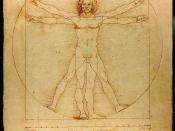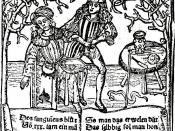What defines the dawn of a new age and the waning of an old one? The answer to this question would probably differ from time to time; after all, periods of history have only too many characteristics to analyze. It is said that in the case of the European renaissance, the Middle Ages is separated from the Modern Age by the abrupt change in humanist views, but when one thinks of the renaissance, one must remember that the humanists were not sacrilegious liberalists they are often said to be; the Hellenistic theories were not left unstudied during the Middle Ages; and, most importantly, the changes in politics began sometime prior to the renaissance.
Many scholars, when describing the humanist movements during the renaissance, exaggerate them so ridiculously to the point where they make the humanists sound like pagans. They did not value heavenly glory as much, this is true, as can be seen by some of Petrarch's writings; but it is also true that Christianity still had its strong influences over the people of Europe even in the latter stages of the Renaissance.
Surely Michelangelo did not complete the Sistine Ceiling merely for the sake of art. Surely Leonardo da Vinci did not paint The Last Supper out of nowhere. The influences of Christianity may have declined under the humanist movements, but they did not abruptly vaporize as some say they did.
It is often said that the Renaissance was a rebirth of Greek and Roman cultures, and many make it sound as if Hellenistic and such ideas were lost during the Middle Ages. As a matter of fact, some scholars often make the Greeks sound completely pagan, which therefore justifies the idea of a rebirth being anti-Christian. This is not so, especially considering the amount of...


